
Grow More at Home: 10 Smart Backyard Vegetable Garden Ideas
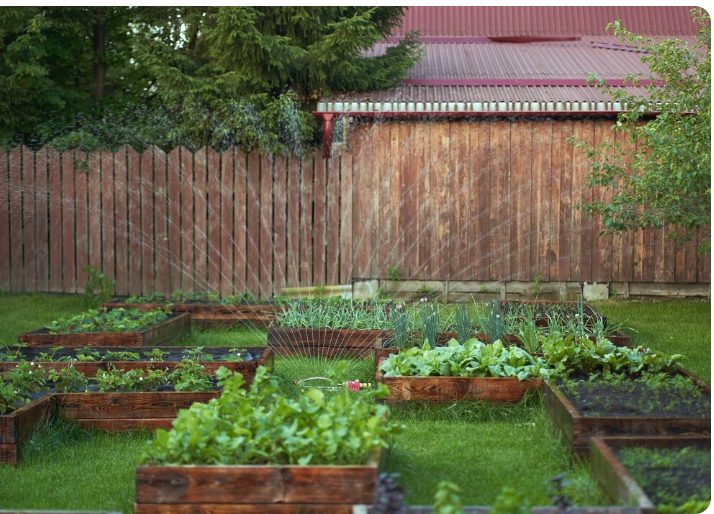
Backyard vegetable gardens bring fresh food, color, and life to any outdoor space. They help reduce grocery costs and give your family healthy produce straight from the soil.
Even a small backyard can turn into a productive growing area with the right layout and smart planning. Raised beds, vertical planters, and companion planting make the most of limited space and time.
With simple tools and a little effort, anyone can enjoy a harvest that feels rewarding and tastes even better. These garden ideas suit beginners and experienced growers alike.
Whether your yard gets full sun or partial shade, there’s a solution that works. Some ideas focus on design and layout, while others highlight practical tips for better growth.
Mix and match them to fit your style and needs. Start with one or two suggestions and see your backyard grow into a vibrant, edible landscape full of color and life.
10 Backyard Vegetable Garden Ideas
Vegetable gardens add life, color, and purpose to your backyard. Fresh vegetables at your doorstep taste better, cost less, and grow with love.
Even a small outdoor space can grow big results. These backyard vegetable garden ideas work for beginners and experienced gardeners.
Each idea fits different yard sizes, soil types, and design styles. Use them to grow healthy food and enjoy your time outdoors. Let’s explore 10 ideas that can bring your backyard to life.
1. Raised Garden Beds
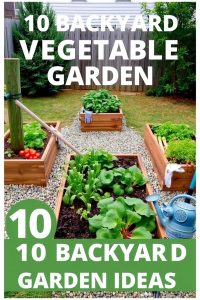
Raised beds keep soil loose and rich. They also improve drainage and keep weeds away. Use wood, bricks, or metal sheets to build boxes about 12 to 24 inches high.
Fill them with good soil and compost. You can plant carrots, lettuce, tomatoes, and peppers. Keep the beds at least 3 feet wide.
That gives you enough space to reach from both sides. Make a few narrow paths between beds. That helps you walk around without stepping on the soil.
2. Vertical Vegetable Garden

Vertical gardens grow up instead of out. That saves space and adds a modern touch. Use shelves, trellises, or wall planters to hold pots. You can grow herbs, leafy greens, or vining vegetables like peas and cucumbers.
Hang planters on fences or walls. Try recycled items like wooden pallets or old ladders. These gardens need daily watering, as pots dry out fast. Keep them close to your kitchen for quick access.
3. Square Foot Gardening
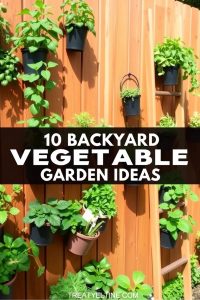
This method divides your garden into small square sections. Each square (1×1 foot) grows one type of plant. You don’t waste space, and planting becomes simple.
Build a raised bed and use string to divide it into squares. Grow a mix of vegetables. One square can grow a tomato plant.
Another can hold 9 spinach plants or 16 carrots. It also helps with crop rotation.
4. Container Gardening
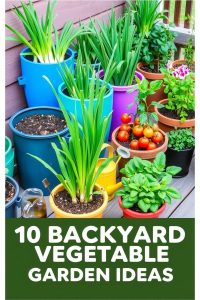
Pots and containers let you garden anywhere. Use them on patios, balconies, or small decks. Pick deep containers for root vegetables like carrots or beets.
Use shallow ones for herbs and leafy greens. Drill holes in the bottom for drainage. Place containers where sunlight lasts for 6–8 hours. Move them around if needed.
Try growing cherry tomatoes, peppers, or green onions.
5. Companion Planting Layout
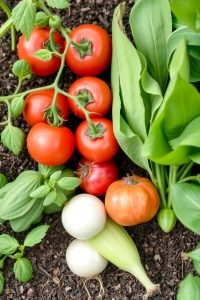
Certain vegetables grow better next to each other. This method improves growth and protects from pests. For example, plant basil near tomatoes.
Or pair beans with corn. Avoid planting onions near beans. Make a layout on paper first. Group plants that help each other. This saves space and makes the garden look full and healthy.
6. Herb Spiral Garden
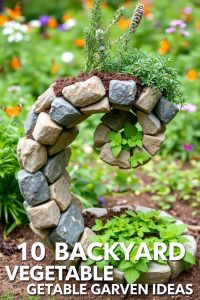
An herb spiral looks like a small mound that spirals upward. The top gets more sun and stays dry. The bottom stays cooler and moist.
That makes it perfect for herbs with different needs. Plant rosemary, thyme, and sage at the top. Add parsley, cilantro, and mint near the bottom. Use stones or bricks to build the spiral shape.
7. Backyard Greenhouse Garden
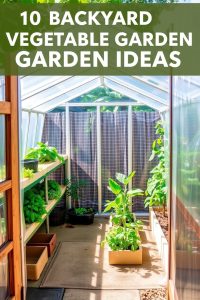
A small greenhouse helps grow food all year. It keeps plants safe from cold and pests. You can buy ready-made ones or build one with plastic sheeting and a wood frame.
Inside the greenhouse, place shelves and raised beds. Grow tomatoes, lettuce, and seedlings. Ventilate it on warm days to prevent heat buildup.
8. Garden in Grow Bags
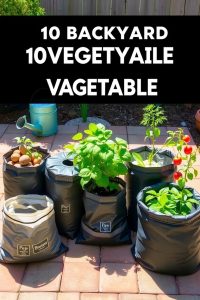
Grow bags are soft, breathable containers made of fabric. They hold soil and drain well. You can move them around easily. Use them on concrete patios or spots with poor soil.
Try planting potatoes, eggplants, and peppers. Each bag holds one or two plants. Water them often, as they dry out quicker than the ground.
9. No-Dig Garden Bed
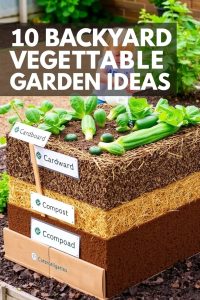
This method builds layers over grass or poor soil. Start with cardboard to block weeds. Add compost, leaves, and straw in layers. Plant directly into the top compost layer.
It saves time and helps soil health. Earthworms do most of the work underground. Try growing leafy greens, beans, and squash in this setup.
10. Edible Border Garden
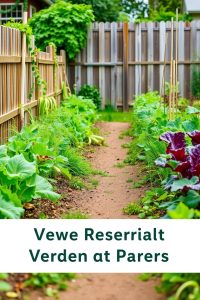
Turn the edges of your yard or fence into garden space. Grow low-growing vegetables and herbs as a living border. It saves space and adds beauty.
Plant lettuce, kale, or chard along paths. Use the back row for taller plants like tomatoes or sunflowers. This design also attracts bees and butterflies.
FAQs
What vegetables are easiest to grow in a backyard?
Tomatoes, lettuce, carrots, beans, and cucumbers grow well with little care.
How much sunlight do vegetable gardens need?
Most vegetables need 6 to 8 hours of direct sunlight each day.
Can I grow vegetables in shade?
Some leafy greens like spinach and lettuce grow in partial shade, but most crops need sun.
How often should I water my vegetable garden?
Water deeply 2–3 times a week. The soil should stay moist but not soggy.
What soil is best for growing vegetables?
Use rich, well-drained soil with compost mixed in. Raised beds and grow bags give better control.
How can I keep pests away from my vegetables?
Try natural methods like neem oil, companion planting, and hand-picking insects. Avoid chemical sprays.
Conclusion
A backyard vegetable garden doesn’t need a lot of space or money. It just needs a little care, good sunlight, and the right plan. Raised beds, grow bags, and vertical gardens help even the smallest yard produce fresh food.
You can enjoy better taste, save money, and spend more time outside. Each idea in this post brings something unique to your garden. Pick one or two to start and grow from there. Your backyard can feed your family and give you peace, one harvest at a time.
